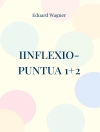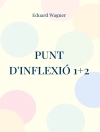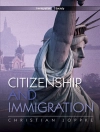The goal of this book is to show the role of Tik Tok as a tool for political purposes. To this end, the authors analyse the messages posted on this social medium by political figures and institutions such as politicians and political parties, their impact on political landscapes, as well as the transformation of political communication techniques in order to suit the platform’s features.
In the last two years, the exponential growth of Tik Tok has led an increasing number of politicians and institutions to incorporate it into their communication strategies. The platform displays some very different features from other social media that determine the way in which the content is presented. In addition, it manages to reach an audience that normally does not access or share political messages.
Within this context, the volume pursues two main objectives. First, to examine how the communication techniques and the peculiarities of this social medium – where short videos with actors in informal attitudes prevail – affect the political message. A second objective is to analyse the influence of the messages distributed through Tik Tok that redefine political scenarios, and of the relationships of politicians and parties with voters. The core of the book comprises case studies that are organised into three parts, with nine chapters in all.
The authors are scholars and practitioners of political communication, with diverse geographical representation, who approach the topics from a range of methodological perspectives. The first part addresses the state of the art and the influence of Tik Tok features on the way political communication is performed. The second part discusses the influence of Tik Tok on electoral scenarios and political culture in India, Bangladesh, the United States, and Ecuador. Finally, in the third part, Tik Tok is analysed as an instrument for promoting far right politicians and parties in Europe, as in the case of Matteo Salvini in Italy, and Af D in Germany and Vox in Spain.
The volume is oriented to both scholars and communication professionals, such as journalists, communication consultants, and speechwriters, who want to become familiar with the platform, learn about its political impact, or wish to deepen their understanding of transformations in communication techniques and their adaptation to this growing social medium.
Chapter 2 “The Moving Body as the Articulator, Meme and Affective Link in Political Communication on Tik Tok” is available open access under a Creative Commons Attribution 4.0 International License via link.springer.com.
Tabela de Conteúdo
Tik Tok: New Media, Old Propaganda. State of the Art and Possibilities for Political Communication.- The Moving Body as the Articulator, Meme, and Affective Link in Political Communication on Tik Tok.- Scrolling Politics: Tik Tok in the Politainment Era.- From Popular Culture to Popular Politics: Tik Toking in India and Bangladesh.- The Dangerous but Efficacious Potency of the Social Media Behemoth Tik Tok on U.S. Politics with Gen Z: Conceptualization of Mis-, Disinformation and Propaganda on Tik Tok.
Sobre o autor
Laura Pérez Rastrilla works as Lecturer in History of Mass Communication at Complutense University of Madrid. Her main research interests focus on the study of propaganda, the media’s coverage during armed conflicts, and the representation of political campaigns in the media. She has held visiting fellowships in Rjeka, Moscow, Brussels, and Ljubljana.
Pablo Sapag M. is an Associate Professor at Complutense University of Madrid. He is the author of Syria in Perspective and other books and articles on the Syrian crisis. He has published on the media and propaganda, and is also a contributor to the Sage Encyclopaedia of War. He has lectured in British, European, and Latin American universities, regularly contributing to international media.
Armando Recio García, Ph D in Communication. He graduated in Journalism and is a specialist in Communication and Political Management. He works as Lecturer in History of Propaganda, History of Social Communication, and Political Communication and Propaganda at the Complutense University of Madrid. He co-leads the course “Political Communication and Electoral Campaigns” at the Complutense Summer School.












